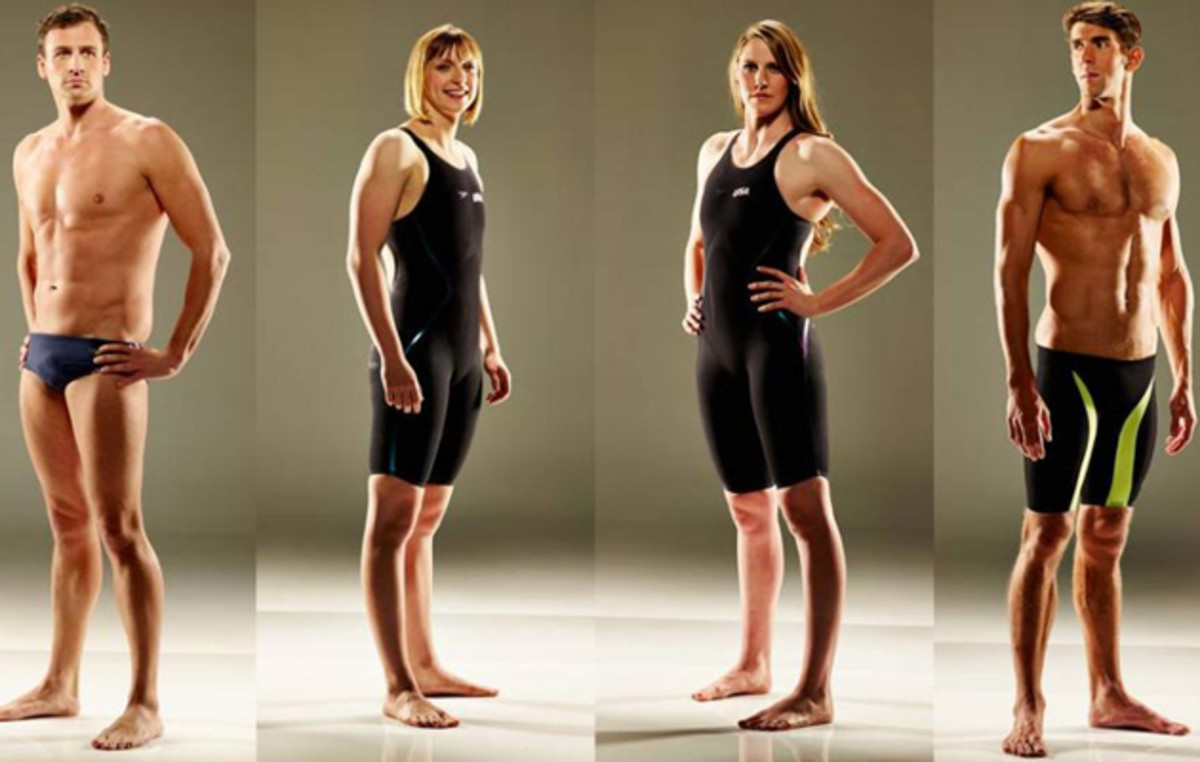Locked In: Compression the most crucial aspect for Olympic swimsuits

The style of men’s competition swimsuits is called a jammer. With the extreme focus placed on compression technology, you can easily see why.
As suit rules have ebbed and flowed over the years, current international specifications dictate a suit for men that can run only from the belly button to the top of the knees. “In some regards it is a slight step backwards, but the jammers themselves have continued to advance and get better,” says Mark Gangloff, 2004 and ’08 Olympic gold medalist and suit reviewer for SwimOutlet.com.
With the major swim brands mixing materials such as carbon fiber, silver, titanium and many proprietary blends full of hydrophobic properties into these incredibly thin and lightweight jammers, getting the right compression actually leads the technology, Gangloff says.
“You want uniform compression against your muscles,” he says. “You like everything to feel like it is locked into place and not going to move. You feel that when you push off the walls in a static position. The suit helps you glide through the water.
• Addition of golf and rugby just a few of many changes at Rio Olympics
And with Olympic swim races coming down to the one-hundredth of a second, Olympians need every advantage they can muster. Gangloff says those little assists given by a suit can make a bigger difference when traveling through water, which is denser than air.

“Not only has the base technology come a long way in elite tech suits, but the intelligence in construction has been revolutionized to allow for smart compression, inventive seam construction and targeted flexibility for each individual swimmer,” Jill Ronco, president of SwimOutlet.com, tells SI.com.
Whether Arena, TYR, Speedo or even the new Michael Phelps-designed MP line from Aqua Sphere, technology extends past the compression.
The Arena Carbon Pro Jammer, which has a number of suits to fit the varying body types and desires of different stroke specialists, Gangloff says, combines carbon fiber with its nylon and elastane compression in a weave it calls Powerskin Carbon Pro. The Arena suit uses a protective grid in the weave to regulate stretching and stiffness. Internal tapes on the legs help keep muscles in proper positions.
Externally the carbon fiber creates a stronger, lighter thread that reduces the chance of tear—these suits are so tight that the average swimmer can easily spend over 20 minutes trying to get into a jammer, hoping not to rip it in the process—while providing lightweight strength.
• Meet Team USA: Ashton Eaton looking to break his own records
The new MP line, which Phelps designed, pairs two materials in one suit. The Exo Foil fabric contains a proprietary 3D stretch woven fabric with compression to “mimic and flex with the movement of the muscles.” The base Exo Foil combines with Aqua Core compression woven panels, placed to follow the femoral artery to improve circulation in the leg, aiming for the result of relaxed muscles before and during competition.
And no matter the mix of compression and technology, suits include bonded seams to reduce drag, water-tight fits at the waist and legs and hydrophobic properties so the suit doesn’t take on water—and the weight that comes with it—during competition.
“It is a good time for the athletes,” Gangolff says, “you can get a good suit from a lot of different brands.” Each jammer comes packed with a blend of technology, all compressed into one suit, with compression serving as the key.
Tim Newcomb covers sports aesthetics—stadiums to sneakers—and training for Sports Illustrated. Follow him on Twitter at @tdnewcomb.
